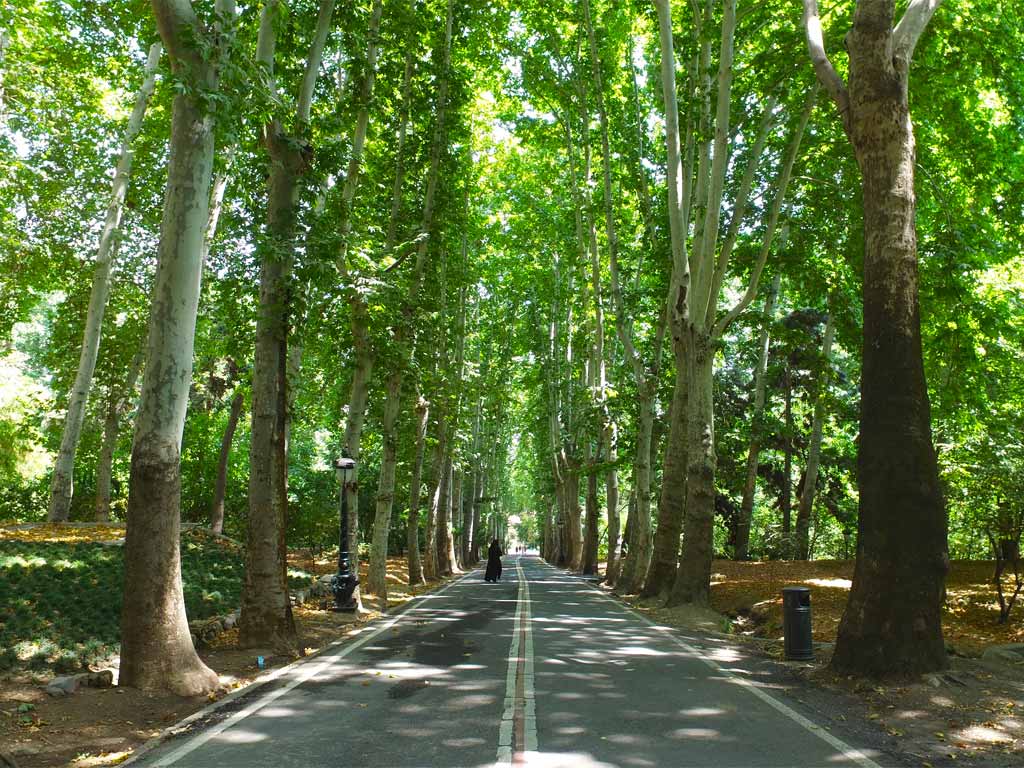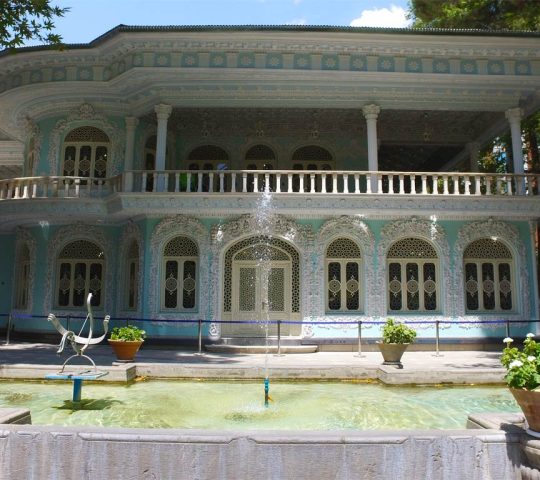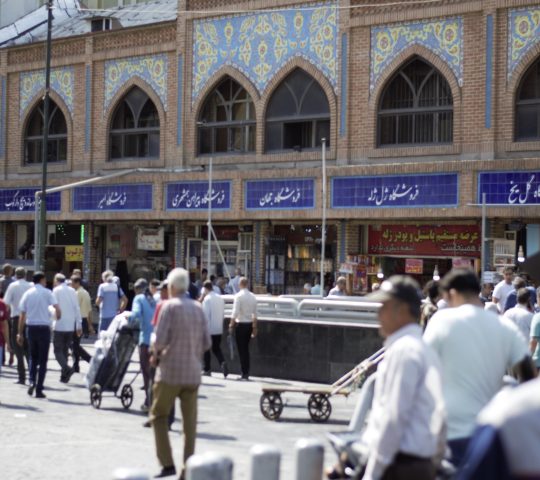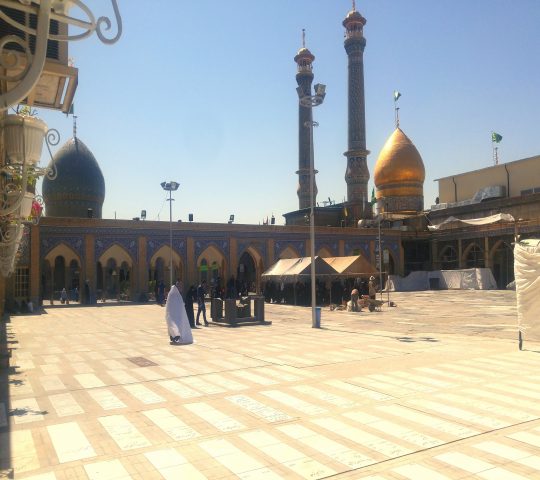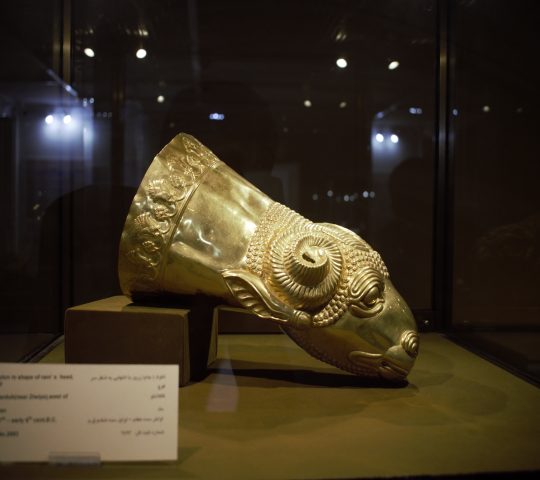The construction of the Saadabad Palace Complex was started during the Qajar era. Considering the mild climate of this region (North of Tehran), the Qajar Kings used the palaces of Saadabad as summer residences. The land of Saadabad Palace Complex has not initially been as large as the current form but with the passage of time and constructions and purchase of neighboring lands by Pahlavi Kings, this complex has become wide.
Currently, the Saadabad Palace Complex has more than 100 hectares of land, including Qanats, entrance and exit doors, palaces, and other buildings.
Mellat Palace and Museum (Nation Palace)
The Mellat Palace and Museum with about 7000 m2 and having more than 61 sections is the largest palace complex in Saadabad Palace Complex In the past, based on historical-political situations, the palace was introduced by other names such as the Palace of the Shah, the Special Palace, the Special White Palace, the White House (because of the use of white stuff in the exterior).
After the Islamic Revolution, this historical complex was renamed for the last time to Mellat Palace. Stone art masterpieces are clearly visible in parts of the interior and exterior and the largest and oldest woven silk (17th century) in the wall of the largest hall of the palace are the famous features of this palace.
Green Palace (Kakh-e Sabz)
This palace is famous as a green palace due to the marble stone on the exterior. Shahvand Palace is the other name of this palace. It’s constructed in the Qajar era then Reza Shah Pahlavi purchased it from the former owner.
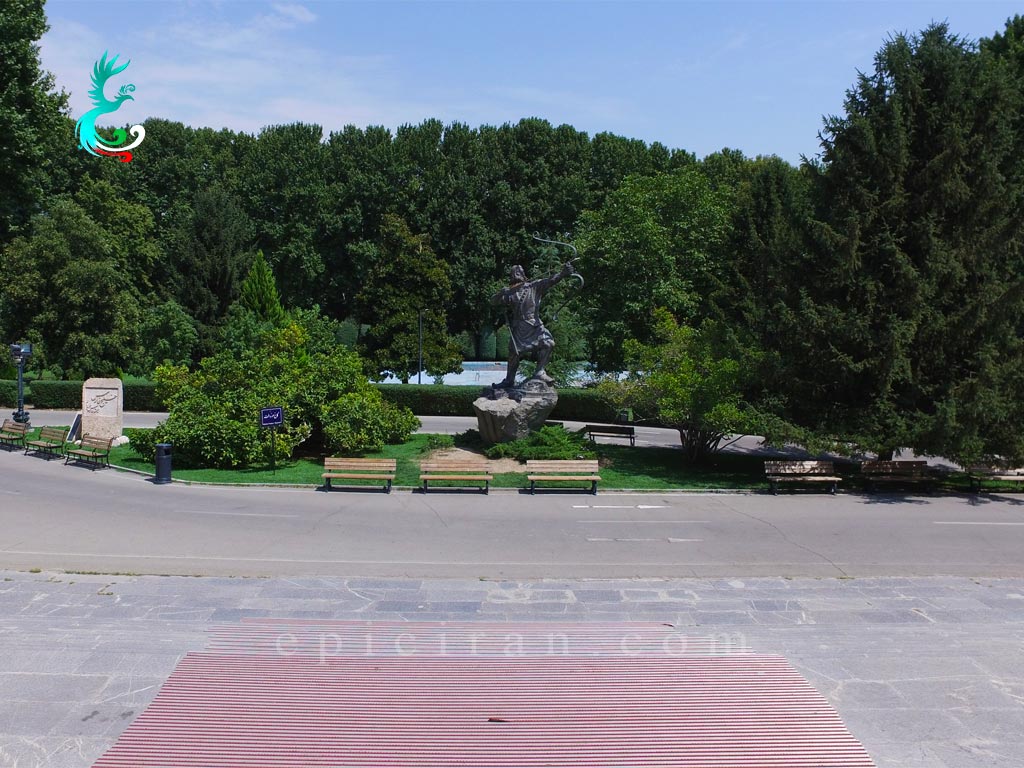
Royal Clothes Museum in Saadabad Palace Complex
The palace with a total area of 2600 m2 located in the north of Saadabad Palace Complex was built in 1939 by Reza Shah Pahlavi. During the period of Mohammad Reza Shah, this palace was owned by Shah’s Sister(Shams). After moving Shah’s sister to the Pearl Palace in Karaj, this palace turned into a place to hold gifts that were presented to the king of Iran. After the Islamic revolution, the palace first turned into the Museum of Anthropology and then to the Royal Clothing Museum.
Master Mir Emad Calligraphy Museum
This building belongs to the late Qajar period and early years of Pahlavi. During the era of Pahlavi, two children of Mohammad Reza Shah, have been lived in this building but until many years after the Islamic revolution, it remained unused until were rebuilt in 1997 and used as a museum in the name of the greatest master of the calligraphy of the 17th century, Mir Emad al-Hassani Saifi Qazvini.
Master Hossein Behzad Museum
Master Behzad is one of the most prominent painters in the field of Persian miniatures. More than 280 Miniatures from this great painter keep at this Master Behzad Museum.
Royal Weapons Museum in Saadabad Palace Complex
This museum is located in the northern part of Saadabad Palace Complex. Before the victory of the Islamic Revolution, the building of this museum belonged to the brother of Mohammad Reza Shah Pahlavi. More than 100 weapons and weapons belonging to the royal family preserve in the Royal Weapons Museum. One of the most interesting weapons of this museum is a wonderful front-loaded gun hammer that belongs to the 16th century which was made in India.
Royal Kitchen Museum
At the period of the 2nd king of Pahlavi, this place was known as the special kitchen. All kinds of food were cooked in this kitchen and then shipped to different palaces of Saadabad Palace Complex with wooden carts or cars (on special days). In May 2011, the building was reconstructed into a royal kitchen museum.
Omidvar Brothers Museum
The Museum of Omidvar Brothers is located in the northwestern part of Saadabad Palace Complex and was constructed in the Qajar era. The museum has 4 rooms with red brick facades on the exterior. The building after the Islamic Revolution was restored in 2002 and was opened in 2003 in the name of the first Iranian tourists.
Omidvar brothers began their journey in 1954 to visit the world. The result of their 10-year trip to ninety-nine countries from five continents were thousands of photographs, films, crafts from different parts of the world, and a large number of scientific articles and research that keep at Omidvar Brothers Museum.
Nations Art Museum in Saadabad Palace Complex
The building was originally a special museum of Farah Pahlavi (wife of Mohammad Reza Shah Pahlavi). Now, in addition to the paintings of Iranian painters, paintings by foreign painters like Bernard Buffet, Herbert Bayer, Fernand Léger, Marc Chagall keep at this museum. Statues, Clay Pots of Maya Civilization, Wooden Statues from Eastern part of Asia and etc, are other things which keep at the Nation Art Museum.
Fine Arts Museum
The museum building is one of the most beautiful buildings of the Saadabad Palace Complex, located at the southernmost point of it. The construction of this building was started by Reza Shah in 1940 but in the next year abandoned by dethroned Reza Shah Pahlavi. About 1963, it was continued by the reign of Reza Pahlavi and in 1967 it became operational as the court of ministries. The building has also been famous for the use of black marble stones on the exterior.
After the Islamic Revolution, this building was reopened in 1982 as the Museum of Fine Arts.
Master Farshchian Museum in Saadabad Palace Complex
The building of the Farshchian master’s museum is a monument of the Qajar era that after Reza Shah’s arrival, he lived for a while with his fourth wife in the building. The total area of this building is 600 m2 and now more than 50 miniature paintings by Master Mahmoud Farshchian keep in the museum.
Water Museum, Royal Tableware Museum (Ashraf’s Palace), Royal Cars Museum, Military Museum (Shahram’s Palace) are other museums of Saadabad Palace Complex.

